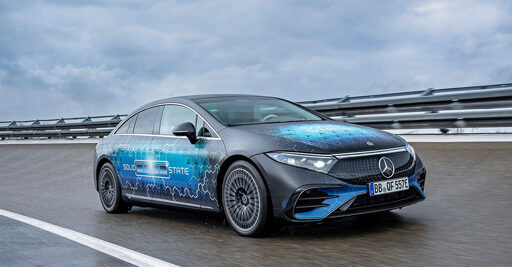Every few weeks, it seems, yet another lab proclaims yet another breakthrough in the race to perfect solid-state batteries: next-generation power packs that promise to give us electric vehicles (EVs) so problem-free that we’ll have no reason left to buy gas-guzzlers.
These new solid-state cells are designed to be lighter and more compact than the lithium-ion batteries used in today’s EVs. They should also be much safer, with nothing inside that can burn like those rare but hard-to-extinguish lithium-ion fires. They should hold a lot more energy, turning range anxiety into a distant memory with consumer EVs able to go four, five, six hundred miles on a single charge.
And forget about those “fast” recharges lasting half an hour or more: Solid-state batteries promise EV fill-ups in minutes—almost as fast as any standard car gets with gasoline.
This may all sound too good to be true—and it is, if you’re looking to buy a solid-state-powered EV this year or next. Look a bit further, though, and the promises start to sound more plausible. “If you look at what people are putting out as a road map from industry, they say they are going to try for actual prototype solid-state battery demonstrations in their vehicles by 2027 and try to do large-scale commercialization by 2030,” says University of Washington materials scientist Jun Liu, who directs a university-government-industry battery development collaboration known as the Innovation Center for Battery500 Consortium.
Indeed, the challenge is no longer to prove that solid-state batteries are feasible. That has long since been done in any number of labs around the world. The big challenge now is figuring out how to manufacture these devices at scale, and at an acceptable cost.
I think the future for EV batteries is going to be sodium-ion for quite a while. They are good enough for most people and the materials to make them are plentiful.
Sodium-ion is fine for fixed storage. The energy density isn’t there for EVs.
The energy density of sodium-ion batteries keeps improving. They are getting pretty close to LiFePO4. Chinese EV manufacturers have started using them. Not everyone needs a super long range, especially in places where there are lots of charging stations available.
Not everyone needs a super long range, especially in places where there are lots of charging stations available.
That is exactly the issue with ev sales in a car-centric place right now, people wanted a bazilion miles in single charge. Even with 400km in a single charge most people will still look at it and think they need more, even though they only drive 15km per day and road trip once every 2 years.
Yes, people don’t know what they need. 400km range is PLENTY of the vehicle can charge fast.




